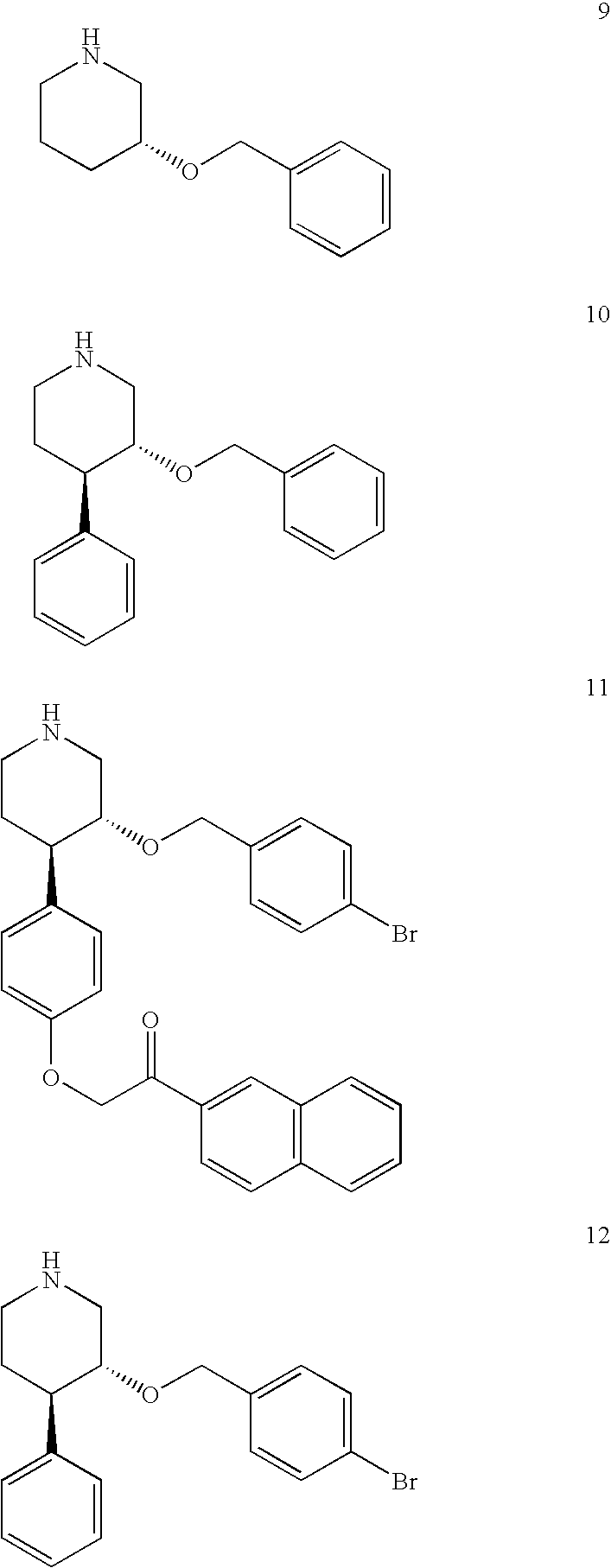Method to design therapeutically important compounds
a technology of peptides and compounds, applied in the field of methods of designing nonpeptide compounds, can solve the problems of unobservable changes, other conformations of the ensemble may be completely unanticipated,
- Summary
- Abstract
- Description
- Claims
- Application Information
AI Technical Summary
Benefits of technology
Problems solved by technology
Method used
Image
Examples
examples
[0132]Compounds 1 through 5 are known HV protease inhibitors that were developed via high-throughput screening. All of these compounds are considered “non-peptide peptidomimetics” because of their remote structural similarity to peptide substrates. However, X-ray crystal structures of HIV protease complexed with 1, 2, or 3, revealed that the inhibited active site topography is very similar to the inhibited active site topography in HIV protease / peptide complexes.
[0133]In this Example, the computer program “GrowMol,” a molecular modeling program, was used to identify known non-peptide peptidomimetics that bind to a structurally distinct aspartic peptidase active site conformation. The conformation was a nonextended β-strand conformation.
[0134]Piperidine 4 inhibits renin at about 26 μM, while the optimized piperidine inhibitor 5 inhibits renin at low nM concentrations. See Oefner et al. (1996) Chem. Biol. 6:127; Viera et al. (1999) Bioorg. Med. Chem. Let. 9:1397; and Guller et al. (1...
PUM
| Property | Measurement | Unit |
|---|---|---|
| time | aaaaa | aaaaa |
| wavelength | aaaaa | aaaaa |
| enantiomeric excess | aaaaa | aaaaa |
Abstract
Description
Claims
Application Information
 Login to View More
Login to View More - R&D
- Intellectual Property
- Life Sciences
- Materials
- Tech Scout
- Unparalleled Data Quality
- Higher Quality Content
- 60% Fewer Hallucinations
Browse by: Latest US Patents, China's latest patents, Technical Efficacy Thesaurus, Application Domain, Technology Topic, Popular Technical Reports.
© 2025 PatSnap. All rights reserved.Legal|Privacy policy|Modern Slavery Act Transparency Statement|Sitemap|About US| Contact US: help@patsnap.com



